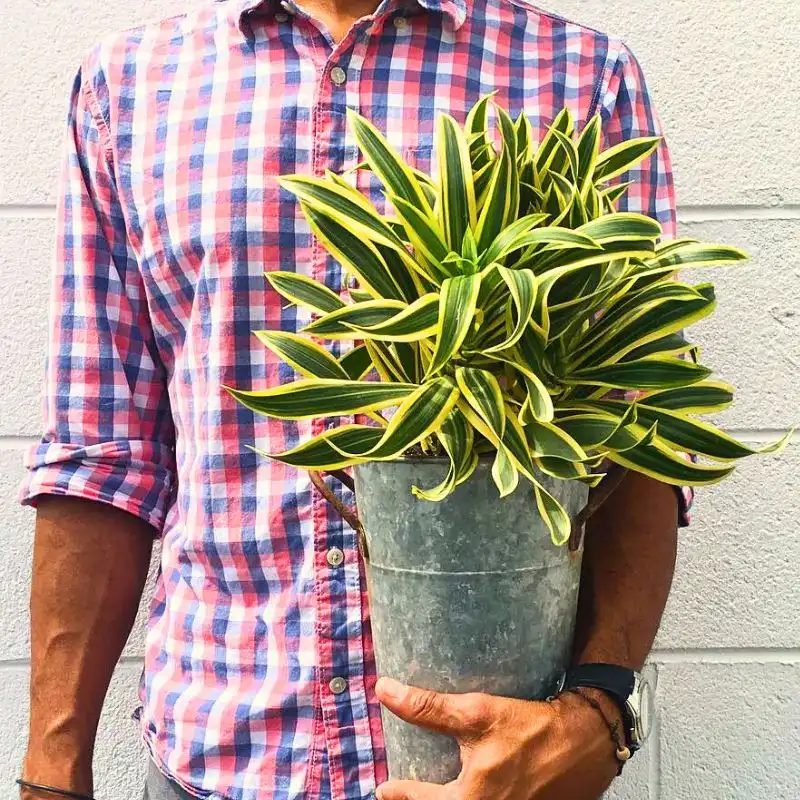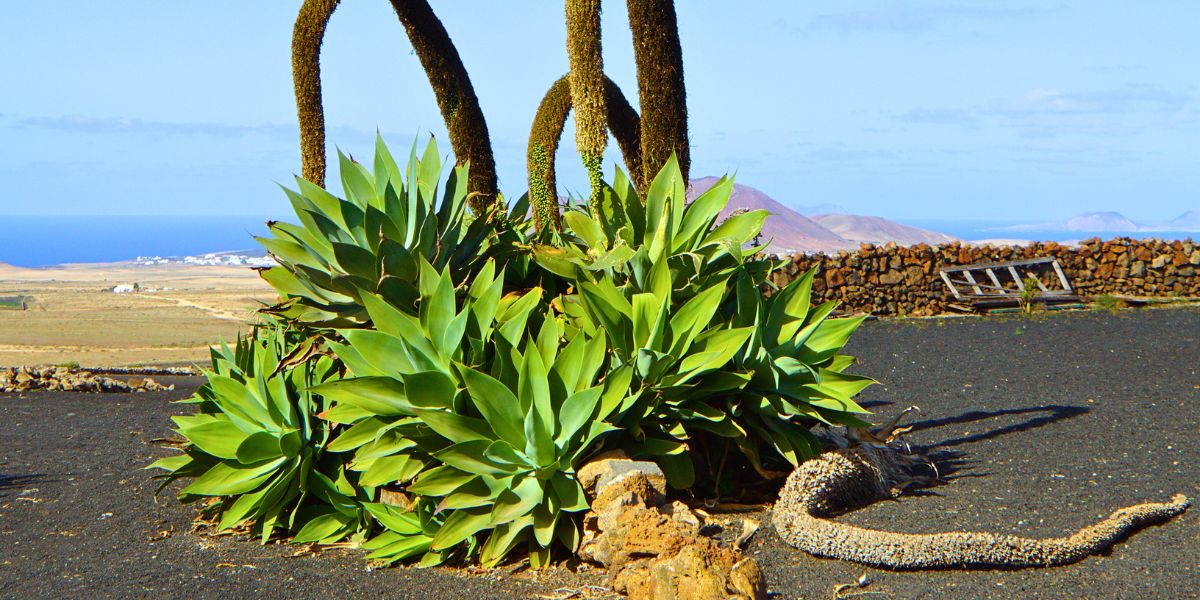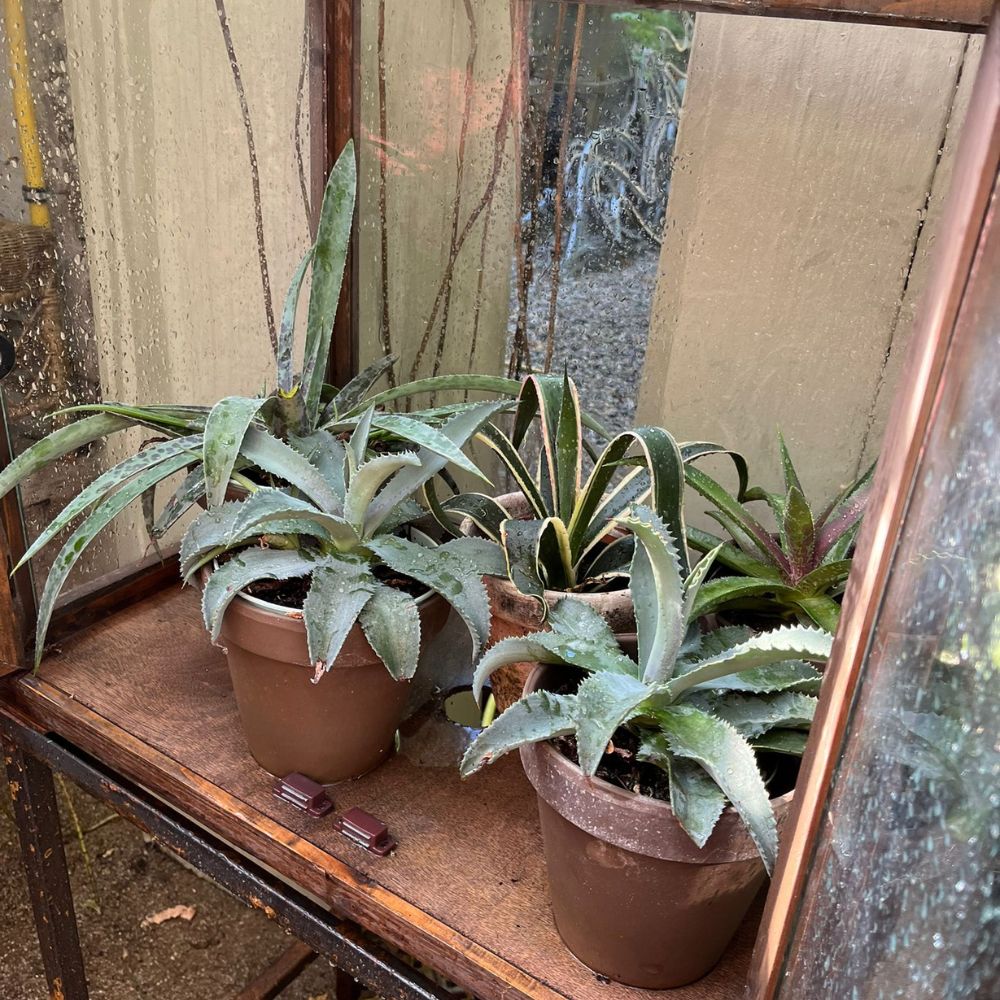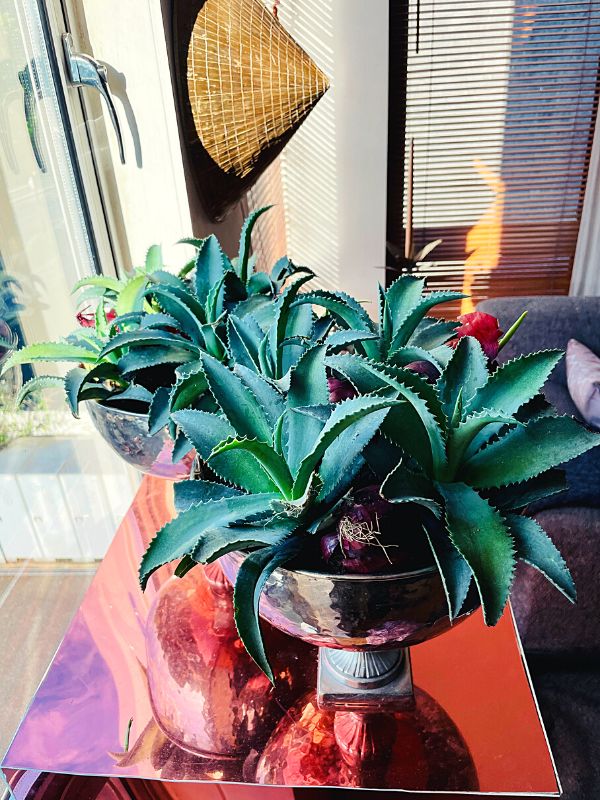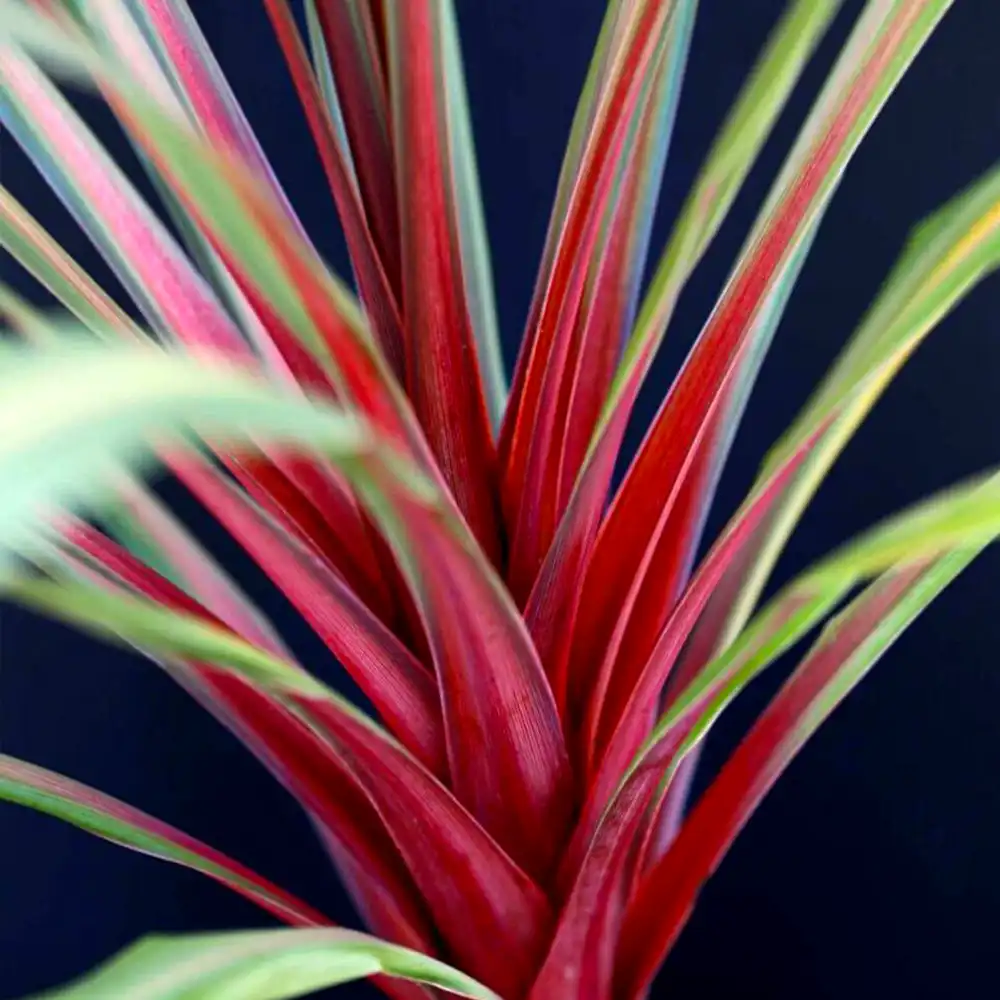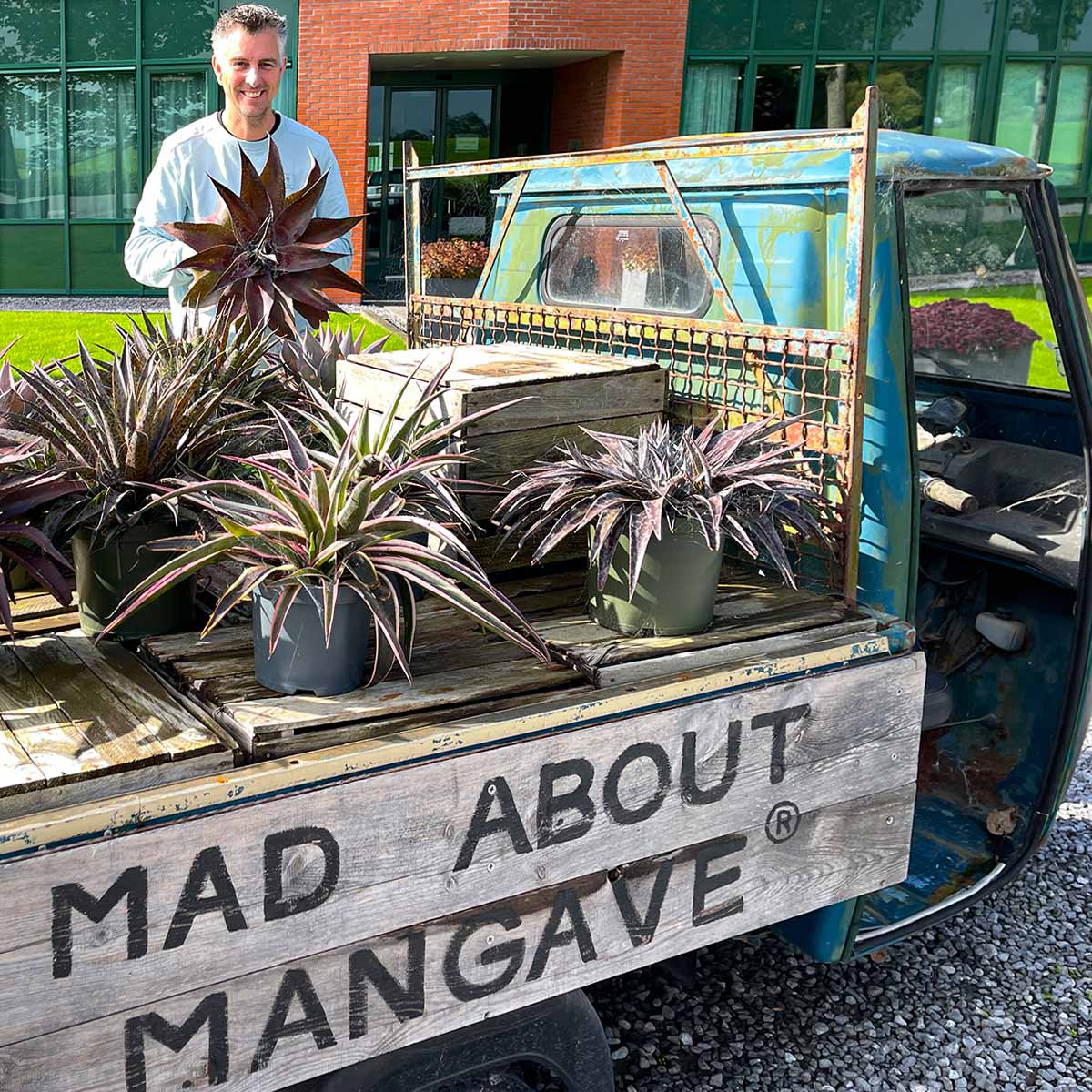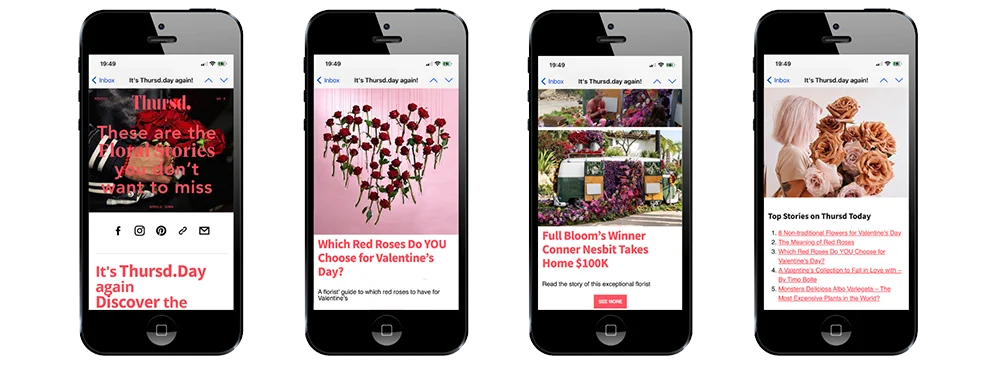There's something undeniably magnetic about the Mangave. It is winning the hearts of many, from landscape designers to plant enthusiasts. Perhaps it's the way these extraordinary plants seem to defy botanical convention, combining the architectural drama of Agaves with the softer, more approachable nature of Manfredas. Or maybe, their amazing ability to thrive in challenging conditions while maintaining an almost sculptural beauty that enhances any space they inhabit.
Whatever the reason, Mangaves did emerge as the darling of contemporary horticulture. They earned devoted followers who spoke of them with the kind of reverence typically reserved for other rare treasures. For starters, do you like Agaves for their symmetry and graphic appearance, but fear of getting poked by the sharp spines? If so, then the Mangave is just for you! The Mangave is a hybrid created by crossing a Manfreda with an Agave. How cool is that?
The Curious Origins of Mangave
Mangave’s story began with a serendipitous crossing between two succulent genera—Agave and Manfreda—somewhere in the arid wilds of Mexico. For decades, both species quietly thrived across the Americas, Agave famed for its tough, architectural presence and Manfreda for its softer leaves and quick growth.

But it wasn’t until the late 1990s that horticulturalists discovered a seedling unlike any before: one that married Agave’s graphic silhouette with Manfreda’s speed, quirky patterns, and softer touch. This first accidental hybrid, found at Yucca-Do Nursery in Texas, was noticeably larger than expected and displayed a whimsical spotted appearance. These plants had spots like Manfreda but were enormous, and their structure was Agave-like. The species Agave Celsii had been growing just nearby, so they figured that they must have pollinated one another.
As word of the discovery spread, horticulturists and breeders leapt at the hybrid’s great potential. Tony Avent of Plant Delights Nursery and Carl Schoenfeld of Yucca-Do Nursery coined the catchy name ‘Mangave’ to mark this new nothogenus, capturing the blend of its two forebears. Plant breeder Hans Hansen took the plant’s prospects further, dedicating years to refining, crossing, and amplifying its beauty through careful breeding and innovative tissue culture techniques.

Tony started breeding them at Plant Delights, and after five years of crossing, they could see the potential. But taking on the breeding of the Mangaves was a bit, just too much for them. They gave all their breeding stock to Hans Hansen, an incredible plantsman and hybridizer at Walters Gardens in Michigan. The Mangaves at first sat unnoticed in the back of a greenhouse until the cover came off the building.
When exposed to ultraviolet light, they turned into all these incredible colors. And, the results, later, were an explosion of Mangave cultivars, many boasting features that would be sensational even by Agave standards: astonishing colors, dramatic spots, variegated foliage, and forms that range from elegant fountains to audaciously toothy spines. Many people across the region invested in them.

Tony Avent:
“Once people see and grow Mangaves, they realize how fantastic they are.”
After developing many different varieties and successfully introducing these new Mangaves in the US, Europe followed suit as well. For the European market, the first varieties were set out at two growers: F.N. Kempen and Van Son & Koot. Soon, they became available for purchase under the brand 'Mad about Mangave.'
Is Mangave, a Once in a Once-In-A-Lifetime Novelty?
Sometimes you just know you have gold in your hands. That is what you can imagine happened with plant-loving people within the industry when the Mangave came around. How did they look when they saw the first Mangave varieties? And learned of their specs? How fast they grow, and how easy they are to look after. They must have been bedazzled. While on one hand, Mangaves look like they are very old plants, on the other hand, they look so fresh. So, you can see, a novelty like the Mangave hardly comes by so very often!

An Easy Plant, With Low Maintenance and High Impact
Among all its virtues, Mangave’s ease of care may be its most lovable quality. Traditional succulents often trade showiness for finicky habits, but not Mangave. From its drought resistance and ability to tolerate poor soils to its remarkable pest and disease resilience, Mangave demands little but offers abundant returns in exchange. It thrives in well-drained soils with little need for fertilization, asking only for a sunny exposure to bring out the richest leaf colors and most mesmerizing patterns. Its succulent leaves store water efficiently, so even forgetful gardeners can enjoy its health and vigor through bouts of neglect.

Most varieties handle both warmth and moderate cold, with some hybrids hardy to zone 7 or even lower when well established. Compared to pure Agave, Mangave tolerates higher levels of moisture and is less likely to rot in rainy climates, another boon for city gardeners contending with unpredictable weather. Its non-toxic nature makes it pet- and family-friendly, while resistance to deer and rabbits appeals to country dwellers. And when a Mangave eventually flowers, producing a stunning flower spike, its life doesn’t end the way Agave’s does: offsets and ‘pups’ emerge at the base, ensuring the beauty continues.

Mangaves also do really well in a container, where they are still very easy to look after. Not only outdoors, but indoors as well. As long as you give them enough light. Because it's the UV light that gives them the beautiful colors. And you know what? You don't even have to water them if you don't want to! If you do, they grow fast; if you don't, they stay kind of dormant. Of course, everyone would suggest giving them water, because who doesn't want to have bigger plants? Compared to the slow-growing Agaves, these Mangaves grow fast! A Mangave plug grown from tissue culture takes 12 to 16 weeks to fill out a quart container, then another two weeks to fill a gallon. Agaves, in comparison, take about 63 weeks.


Mangave the Design Marvel
Part of Mangave’s popularity is owed to its astonishing versatility in landscape and container design. Whereas classic Agave may require patience and tolerance for formidable spines, Mangave offers plush, pliable leaves and a fast growth rate, a blend that lets it reach garden-worthy size in seasons rather than years. The softer spines mean you can plant Mangave close to walks and entries without the fearsome ‘poke factor’ of true Agave, opening up design options for every type of gardener.
In containers, Mangave excels as a living sculpture—a single dramatic specimen in a modern planter creates instant chic, while clustered varieties bring a vibrant, layered effect to patios and balconies. Mangave’s willingness to play well with other low-water companions makes it a natural for modern drought-tolerant and xeriscape gardens, where its colors and forms provide high-contrast drama alongside cacti, sedums, echinaceas, and ornamental grasses. Designers praise Mangave for its ‘focal point’ capability, the way a variegated or spotted form can anchor beds or soften the lines of hardscape with its gentle arching leaves.


Mangave also adapts beautifully to life as a houseplant. With the right light—ideally a bright, sun-drenched spot—it thrives indoors, casting architectural shadows and a touch of the exotic and modern. In climates with cold winters, Mangave comes inside without complaint, ready to return outdoors when summer arrives, which means anyone, everywhere, regardless of zone or plot size, can enjoy its distinctive flair year-round.
Why Mangave Is So Adored
What, then, is the secret of Mangave’s charm? Part of the answer lies in its dazzling looks; Mangave offers leaf colors and forms so vivid they often appear almost surreal, splashed with wine reds, silvered blues, and leopard-like spots. It is a plant that invites touch, study, and awe with its elaborate beauty, adding a rare sense of artfulness to the garden. But Mangave is also deeply practical: it gives gardeners quick gratification and a long list of landscape solutions, all while demanding little in return. It is the rare plant that bridges the perennial divide between style and substance.


Mangave’s emergence is also well-timed for the 21st-century garden renaissance, where sustainability, water conservation, and adventurous aesthetics all converge. For eco-minded gardeners, choosing Mangave means investing in a plant that thrives with minimal inputs and plays a role in climate-adapted design. For lovers of houseplants, it is a trophy plant that grows quickly and remains manageable. For designers, it is a palette of color, pattern, and personality that can transform any ordinary bed or planter into a work of art.
Perhaps Mangave’s greatest may be its power to surprise and delight. Every new hybrid seems to offer a fresh take on what a succulent can be: a polka-dotted, silvered, or crimson-flecked vision that stops visitors in their tracks and inspires questions and admiration. From the moment Mangave entered the gardening mainstream, it has been celebrated as a ‘happy accident,’ a perfect storm of genetics that created not just another plant, but a phenomenon. Its story continues to unfold, with both breeders and home gardeners discovering brand new combinations, forms, and colors every season.

Which Mangave Varieties Are Available?
Due to the tireless work of breeders who have coaxed out the most extravagant traits from their diverse parentage, Mangave now comes in a rich range of varieties. In gardens and nurseries, you’ll likely find Mangaves with powdery blue, stately purple, apple-green, bronzed pink, or even near-black leaves, and sometimes all on a single plant. Here are some found in the European market.
Mangave Inkblot
This Sun-loving Mangave Inkblot is a versatile, easy-to-maintain Mangave succulent. The first thing you notice about these Mangave plants is their striking colors and patterns. The coloring of the Mangaves is amazing. With more sun exposure comes deeper, more intense spotting of foliage.

Mangave Lavender Lady
Mangave Lavender Lady is a unique, feminine beauty whose solitary rosette habit and smoky purple coloration make it look very similar to an Echeveria. Indirect sunlight, smoky purple leaves are formed at the top of the rosette and have subdued burgundy-purple dots. As the rosette ages, the ovate leaves lighten to green, forming a two-tone effect.
Mangave Mint Chocolate Chip
Enjoy this Mangave Mint Chocolate Chip, a unique-looking succulent for its incredibly wavy leaves and intense spotting. Long, silvery blue-green leaves are succulent, but not as rigid as Agave. Near-black spotting is present on both fronts and backsides of the leaves and contrasts beautifully with the lighter colored leaves. A very fine white margin lines the edges of the leaves with a serrated edge.

Mangave Mission to Mars
Mangave Mission to Mars is an amazingly bright red Mangave. A common nickname for Mars is the Red Planet, and this Mangave gets its moniker due to the unique, intense red coloration from the leaves. Thick green leaves that are heavily speckled with burgundy red, with spots that bleed into each other for an overall red appearance. The red coloration is brought out best in direct sunlight.
Mangave Moonglow
The Mangave Moonglow is a relatively new and exciting cross between the genus Manfreda and Agave. Characterized by a low but wide symmetrical rosette of long flat leaves, which have dramatic coloration, being silvery-blue, mottled with large purple spots, becoming even more pronounced in full sun. Although the leave has tiny marginal spines together with a terminal spine, they are relatively soft to touch compared to the Agave.

Mangave Pineapple Express
The refined, spiky habit of this Mangave called Pineapple Express, will remind you of the top of a pineapple. Her dark green leaves are long and slender, with pronounced burgundy spotting. The spots will be more pronounced when in full sun and exposed to UV light. A waxy coating gives the leaves a minty-green finish. Leaves are packed in tightly to form a spiky rosette. Tiny spines line the margins, and a very sharp, cinnamon terminal spine completes the spiky look.
Mangave Silver Fox
A stunning and exceptional variety in a color that you wouldn't expect to see in a Mangave! Just like the white fur of a silver fox, this succulent glows nearly white when you first glance at it. In reality, it's more of a light green covered with a thick waxy coating to give it that glowing color. Light blue-purple spotting appears underneath the coating but is mostly unnoticeable from a distance. In addition to its wonderful color, Mangave Silver Fox has a magnificent habit, with thick, arching leaves and defined marginal teeth.

Mangave Spotty Dotty
The Mangave Spotty Dotty gets its beautiful spots from its Manfreda lineage, and its thick, wide leaves from its Agave parentage. Beautiful medium green leaves are covered with small, dark burgundy-purple spots. It has very wide leaves that fold up at the margins, displaying their sienna orange marginal teeth and long terminal spines. Leaves completely overlap each other, leaving little to no gaps, creating a full-looking plant that's perfect for containers. Its leaves are softly wavy, creating a unique texture.
For European floral designers, landscapers, and other professional plant lovers, plant wholesaler Waterdrinker always has these varieties and more in store. Now you know how to get your hands on one of these beauties!
Feature image by @peterplantipp. Header image by @pamdigging.


